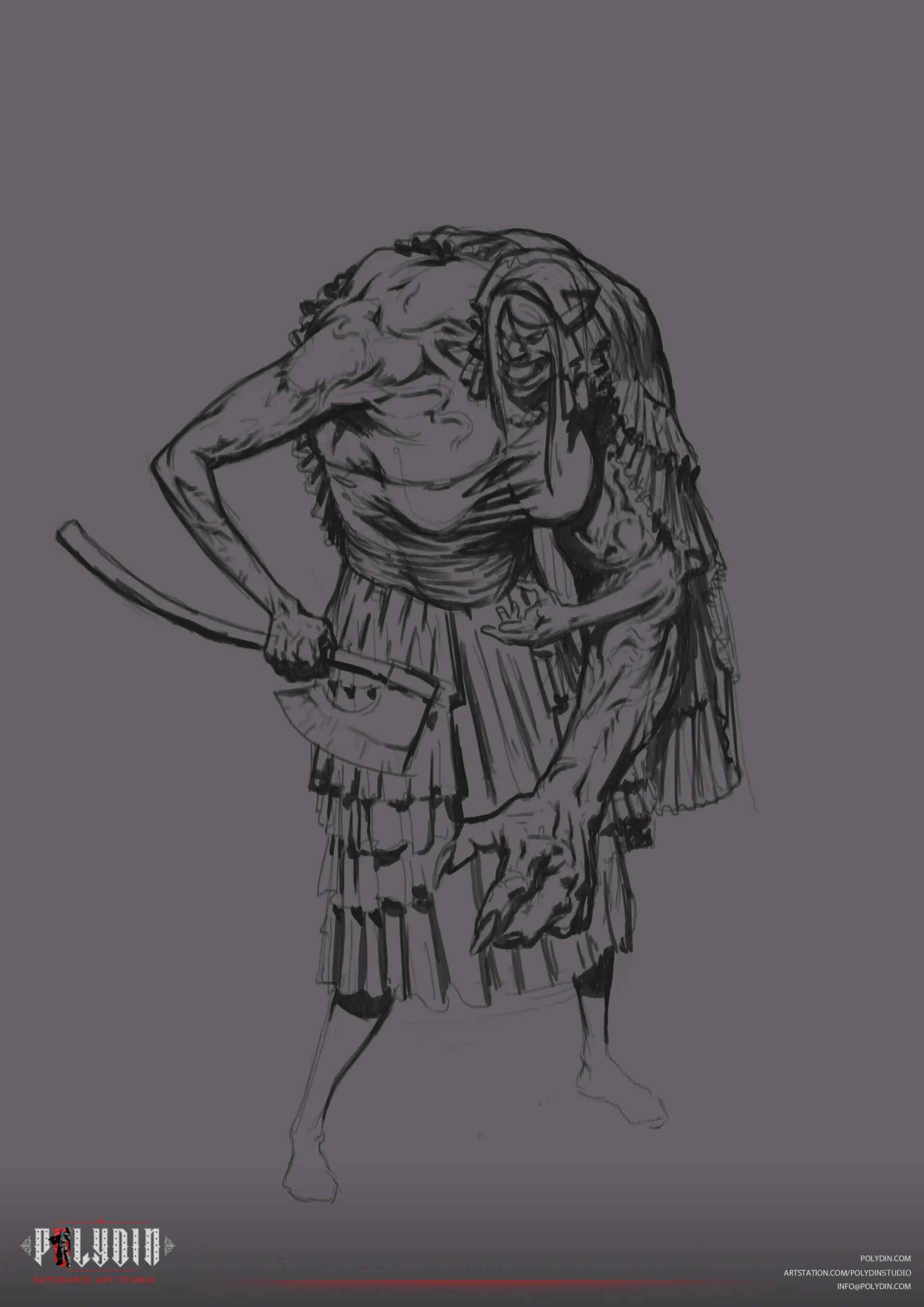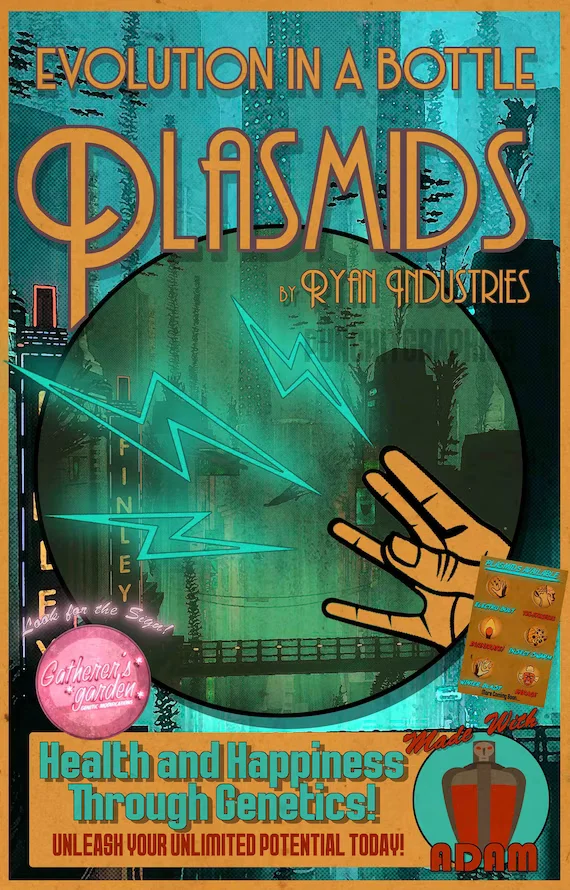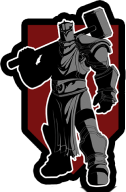Concept art and illustration are two captivating realms of visual arts that play vital roles in various creative industries, including gaming, film, and advertising. These art forms are powerful tools for capturing ideas, envisioning worlds, and bringing imagination to life. While concept art focuses on the early stages of visual development, illustration embraces the art of storytelling through captivating images. Understanding the differences and applications of concept art and illustration is crucial in appreciating their unique contributions to the creative process.
In this article by Polydin game art outsourcing studio, we will explore the fascinating world of concept art and illustrations, delving into their definitions, differences, and significance in the realm of game art. We’ll discover how concept art studio sets the foundation for visualizing characters, environments, and narratives while illustration breathes life into these concepts with rich detail and narrative depth. Additionally, we’ll uncover notable examples of concept arts and illustrations in popular games, highlighting their role in shaping immersive gaming experiences. Furthermore, we’ll explore the importance of concept art and illustrations in the game art industry and the benefits of outsourcing these creative endeavors.
What is Concept Art?

Concept art is a captivating and imaginative form of visual expression that serves as a foundation for developing characters, environments, and overall aesthetics in various creative industries. It is an early and essential stage in the artistic process, where ideas, concepts, and designs are brought to life through sketches, digital paintings, or mixed media creations. Concept art acts as a visual blueprint, capturing the essence of a project and guiding subsequent artistic endeavors.
At its core, concept art is about visual storytelling. It involves exploring and communicating ideas, themes, moods, and narratives through visual representations. Concept artists uniquely translate abstract concepts into tangible images that resonate with the intended audience. They work closely with creative teams, including game designers, art directors, and producers, to understand the project’s vision and translate it into captivating visual elements.
Concept art goes beyond mere illustration or representation. It involves creating key elements such as characters, creatures, props, environments, and architectural designs that shape the overall visual identity of a project. The aim is to evoke emotions, immerse viewers in a world, and provide a visual foundation for further artistic development. Concept artists employ various techniques and tools, both traditional and digital, to bring their visions to life, utilizing skills such as sketching, digital painting, color theory, composition, and an acute understanding of design principles.
Concept art is an integral part of the creative process, serving as a visual catalyst for bringing ideas and concepts to fruition. It plays a crucial role in shaping the visual direction of projects, capturing the essence of the envisioned world, and guiding the following artistic endeavors. Concept artists breathe life into the imagination through their artistic expertise and storytelling prowess, laying the groundwork for immersive experiences in gaming, film, animation, and other creative mediums.
What is Illustration?

Illustration is a captivating and versatile art form that combines visual storytelling, creativity, and technical skill to convey messages, ideas, and narratives through images. It is a form of visual communication that bridges the gap between words and visuals. It uses various mediums such as drawing, painting, digital techniques, and mixed media to create captivating and evocative visuals.
At its core, illustration captures and interprets ideas, concepts, and stories visually. It is often used to enhance and complement written content, providing a visual representation that engages and captivates the audience. Illustrators can distill complex ideas into simplified and visually appealing forms, using their artistic techniques and styles to convey emotions, convey information, or evoke specific responses from viewers.
Illustration finds its applications in a wide range of industries, including publishing, advertising, editorial work, packaging design, and, of course, game development. In the realm of gaming, illustrations are employed to bring characters, environments, and narratives to life. They help create immersive worlds, communicate gameplay mechanics, and enhance the overall visual experience for players. Illustrators collaborate closely with game designers, art directors, and creative teams to understand the project’s vision and deliver visuals that align with the intended artistic direction.
Illustration is a powerful art form that combines creativity, storytelling, and technical expertise to communicate ideas and narratives visually. It serves as a vital component in various industries, including gaming, where it enriches the player experience, adds depth to storytelling, and contributes to the overall visual identity of a game. Through their artistic prowess and creative interpretation, illustrators bring imagination to life, creating visuals that captivate and inspire audiences.
The Differences Between Concept Art and Illustration

Concept art and illustration share similarities in their visual storytelling nature; distinct differences set them apart regarding purpose, process, and application.
Concept art primarily serves as a preliminary stage in the creative development process. It is a visual exploration and ideation of ideas, characters, environments, and overall aesthetics for a project. Concept artists work closely with game designers, art directors, and creative teams to establish a game’s visual direction and artistic vision. Their main focus is on visualizing concepts and translating them into tangible visual assets that will guide the production pipeline. Concept art often includes sketches, character designs, environment studies, mood boards, and color schemes. These serve as references for the art team and provide a blueprint for the game’s visual development studio.
On the other hand, illustration is more focused on creating finished, stand-alone artworks that communicate a specific message or tell a story. Illustrators often work independently or collaborate with writers, publishers, and advertising agencies to create visually compelling imagery for various media. Unlike concept art, which is primarily for internal use, illustrations are intended for public consumption and can be seen in books, magazines, advertisements, and online platforms. Illustrations are often highly detailed and polished and showcase the artist’s style, and they can evoke emotions, captivate viewers, and convey narratives through their visual impact.
Concept art is a practical and exploratory process that establishes a project’s visual foundation and direction. At the same time, an illustration is a finished artwork that stands on its own to convey a specific message or narrative. Concept art informs the development of a game, while illustration focuses on creating visually captivating and expressive artworks for public consumption. Both disciplines require artistic skills and creativity but serve different purposes within the realm of visual arts.
The Purpose of Concept Art and Illustration in Games

Concept art and illustration play vital roles in the development and success of games, each serving specific purposes throughout the creative process.
The primary purpose of concept art in games is to visually explore and define the look and feel of the game world. Concept artists work closely with game designers and art directors to bring ideas to life by creating early visual representations of characters, environments, objects, and overall visual style. These concept artworks serve as a visual guide, helping to establish a cohesive and immersive game world. They aid in communicating ideas, setting the tone, and capturing the essence of the game’s narrative, themes, and gameplay mechanics. Concept art fuels the development team’s imagination. It serves as a reference for other artists, such as 3D modelers, texture artists, and animators, who rely on these visual references to bring the game to life.
Illustration, on the other hand, contributes to the storytelling aspect of games. Illustrators create captivating and evocative visuals that help convey narratives, depict key moments, and showcase characters or scenes more detailed and polishedly. Illustrations often find their place in promotional materials, marketing campaigns, and in-game artwork, enriching the game’s visual identity and enhancing the player’s connection to the game world. They can evoke emotions, spark curiosity, and create anticipation, acting as a visual enticement for players to engage with the game.
Concept art establishes a game’s visual direction and foundation, while illustration enhances the storytelling and promotional aspects. Together, they collaborate to create a cohesive and immersive visual experience for players, fueling their imagination and enticing them to explore and engage with the game world.
Examples of Concept Art and Illustration in Popular Games

Concept art and illustration have played crucial roles in shaping numerous popular games’ visual aesthetics and captivating worlds. Here are a few examples:
- “The Elder Scrolls V: Skyrim“: The concept art for Skyrim showcases breathtaking landscapes, detailed character designs, and intricate architecture, capturing the epic fantasy world of the game. Illustrations in promotional materials and game covers further highlight iconic characters and key moments.
- “Overwatch”: Concept art for Overwatch showcases a diverse cast of heroes with unique abilities and distinctive visual styles. These artworks provide insights into the game’s vibrant and futuristic world, while character portraits and splash art illustrate the game’s narrative and promotional materials.
- “The Legend of Zelda: Breath of the Wild”: The concept art for Breath of the Wild showcases the vast open-world environments, varied landscapes, and iconic game characters. Illustrations in the game’s promotional materials and official art books further immerse players in Hyrule’s captivating and adventurous world.
- “Bioshock”: Concept art for Bioshock reveals the hauntingly atmospheric underwater city of Rapture, with its art deco architecture and unique character designs. Illustrations in the game’s promotional materials and in-game posters contribute to the game’s immersive and dystopian atmosphere.
- “Cuphead”: The concept art and hand-drawn illustrations in Cuphead beautifully evoke the style of 1930s cartoons. The unique art direction and animations bring the game’s fascinating and challenging world to life, creating a visually stunning and nostalgic experience.
These examples demonstrate how concept art and illustration are instrumental in defining popular games’ visual identity, world-building, and storytelling. They showcase the creativity and talent of artists in creating captivating and immersive game experiences.
What Role Do Concept Art and Illustration Play in the Game Art Industry?

Concept art and illustration play integral roles in the game art outsourcing industry, contributing to games’ overall visual development and success. Here are some key roles they play:
- Visual Development: Concept art and illustration are the foundation for game visual development. They help artists and designers explore and define the game’s artistic style, setting the tone, mood, and aesthetics of the game world. These artworks provide a visual reference for the development team, guiding the creation of 3D modeling techniques, textures, and animations.
- World-Building: Concept art and illustration are essential in building immersive and believable game worlds. They help create environments, landscapes, architecture, and key locations within the game. These artworks depict the intricate details, atmosphere, and ambiance of the game’s settings, establishing a cohesive and engaging world for players to explore.
- Character Design: Concept art and illustration are vital in creating memorable and visually appealing characters. They help define the appearance, personality, and visual traits of the game’s protagonists, antagonists, and supporting cast. These artworks provide a visual reference for character modelers and animators, ensuring consistency in their design and portrayal.
- Marketing and Promotion: Concept art and illustration are powerful game marketing tools. They are used in promotional materials, game covers, posters, and online advertisements to attract and engage players. These artworks capture the essence of the game, showcasing its unique visual style, key characters, and captivating moments, generating excitement and interest among potential players.
- Artistic Vision: Concept art and illustration help communicate the artistic vision of the game’s creative team. They provide visual communication and collaboration between artists, designers, and stakeholders, ensuring a shared understanding and alignment of the artistic direction and goals.
Concept art and illustration are essential components of the game art industry, shaping the visual identity, world-building, and game player experience. They bring artistic visions to life, captivate players, and contribute to the success and popularity of games in the competitive gaming market.
Benefits of Outsourcing Concept Art and Illustration

Outsourcing concept art and illustration in the game art industry can benefit game developers and studios. Here are some advantages of outsourcing these services:
- Access to Specialized Talent: Game developers can tap into a global pool of talented artists and illustrators by outsourcing concept art and illustration. This allows them to work with professionals with specialized skills and expertise in creating high-quality artwork tailored to their game’s requirements. It provides access to diverse artistic styles, ensuring a unique and visually appealing game experience.
- Cost Savings: Outsourcing concept art and illustration can be a cost-effective option for game developers, especially when compared to maintaining an in-house art team. Outsourcing eliminates the need for recruiting, hiring, and training additional staff members and the costs associated with providing workspace, equipment, and software. It offers flexibility in budgeting and allows developers to allocate resources efficiently.
- Time Efficiency: Outsourcing concept art and illustration can significantly reduce the production time of games. Experienced artists can work efficiently, delivering high-quality artwork within agreed-upon timelines. This accelerates the game development process, allowing developers to meet deadlines and launch their games on schedule.
- Focus on Core Competencies: By outsourcing non-core tasks like concept art and illustration, game developers can focus on their core competencies, such as game design elements, programming, and gameplay mechanics. It enables them to allocate more time and resources to these critical areas, enhancing the game’s overall quality and gameplay experience.
- Fresh Perspectives and Ideas: Outsourcing concept art and illustration brings fresh perspectives and creative ideas. Collaborating with external artists introduces new artistic styles, techniques, and visual approaches that can enrich the game’s visual identity and appeal. It encourages innovation and ensures diverse artistic influences, resulting in a more engaging and immersive game world.
- Scalability and Flexibility: Outsourcing allows game developers to scale their art production based on project needs. They can easily adjust the scope and volume of work by collaborating with multiple artists or teams, ensuring they have the required resources during peak development periods. This scalability and flexibility enable developers to adapt to changing project demands efficiently.
By outsourcing concept art and illustration, game developers can harness the benefits of specialized talent, cost savings, time efficiency, fresh perspectives, and scalability. It provides an opportunity to elevate the visual quality of games, enhance the player experience, and streamline the overall game development process.
Concept Art vs Illustration: Level of Detail and Polish
Concept art and illustration may seem similar, but their purpose and level of detail set them apart. Concept art focuses on speed, iteration, and functionality, while illustration is about refined, polished visuals.
Rendering Differences
Concept art prioritizes quick, readable forms over perfect rendering. Artists use rough brushwork, loose edges, and simplified lighting to communicate ideas efficiently. Illustrations, on the other hand, feature highly detailed rendering with refined textures, smooth gradients, and precise lighting.
Line Work Styles
Concept artists often use minimal or rough linework to sketch out designs before applying color and form. Illustrators, especially in line-based styles, create clean, intentional linework with controlled weight and fluidity.
Color & Light
In concept art, color choices help define mood, function, and atmosphere rather than creating final polished pieces. Illustration uses detailed lighting and color blending to enhance depth and realism.
Texture
Textures in concept art are often suggested rather than meticulously painted, while illustrations tend to include refined surface details that enhance realism or artistic expression.
Background Detail
Concept backgrounds prioritize layout and depth over intricate detail. In contrast, illustrations feature fully rendered backgrounds that complement the subject with rich textures and environmental storytelling.
Conclusion
Concept art and illustration play pivotal roles in the game art industry. Concept art helps visualize and define the artistic direction of a game, setting the tone, mood, and overall visual style. It serves as a blueprint for the game’s environments, characters, and objects, guiding the development process. On the other hand, illustration brings these concepts to life with detailed and captivating artwork that enhances the player’s immersion and storytelling experience.
The differences between concept art and illustration lie in their purpose and execution. Concept art focuses on exploration, ideation, and pre-production, while illustration emphasizes the final presentation of polished and finished visuals. Both are essential components of game development, working hand in hand to create visually compelling and cohesive game worlds.
In popular games, concept art and illustration can be seen in various forms, from breathtaking environment designs and intricate character illustrations to dynamic promotional artwork. They contribute to the game’s marketing efforts, establish its visual identity, and captivate players with stunning visuals.
Concept art and illustration provide numerous benefits for the game art industry, including access to specialized talent, cost savings, time efficiency, fresh perspectives, and scalability. Outsourcing these services can unlock these advantages, enabling game developers to focus on their core competencies, accelerate production timelines, and deliver visually impressive and engaging games.
By understanding the value and impact of concept art and illustration, game developers can harness their power to create immersive and visually captivating game experiences that resonate with players and leave a lasting impression. The collaboration between concept artists, illustrators, and game development teams is a testament to the importance of artistic vision and craftsmanship in games.



